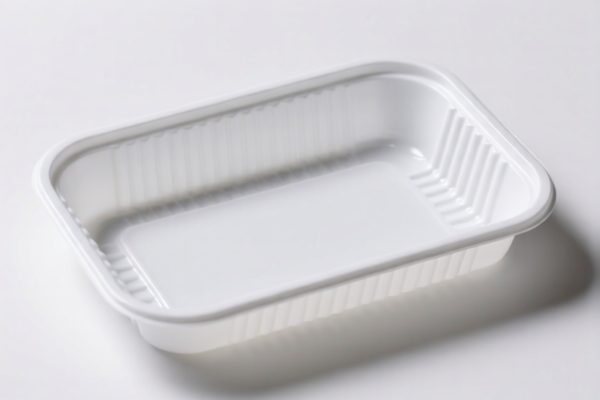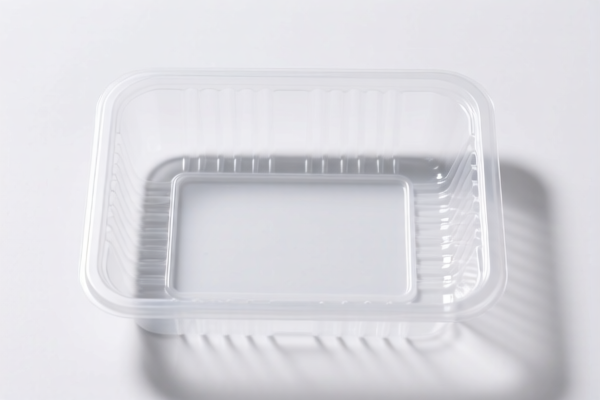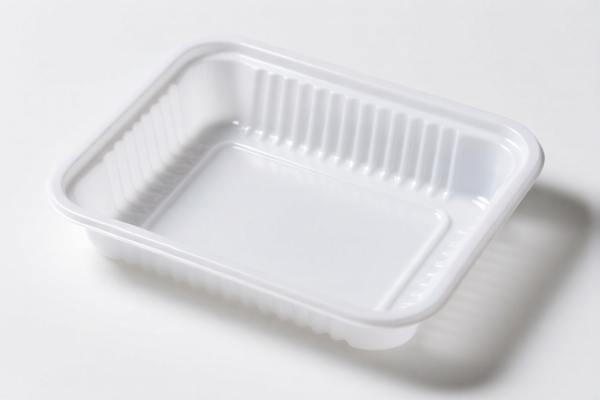| HS Code | Official Doc | Tariff Rate | Origin | Destination | Effective Date |
|---|---|---|---|---|---|
| 4823901000 | Doc | 55.0% | CN | US | 2025-05-12 |
| 4823907000 | Doc | 55.0% | CN | US | 2025-05-12 |
| 4819504060 | Doc | 55.0% | CN | US | 2025-05-12 |
| 4819502000 | Doc | 55.0% | CN | US | 2025-05-12 |
| 3926901000 | Doc | 40.9% | CN | US | 2025-05-12 |
| 3926909910 | Doc | 42.8% | CN | US | 2025-05-12 |
| 3923900080 | Doc | 58.0% | CN | US | 2025-05-12 |
| 6808000000 | Doc | 55.0% | CN | US | 2025-05-12 |
| 6815994170 | Doc | 55.0% | CN | US | 2025-05-12 |
| 6815992000 | Doc | 55.0% | CN | US | 2025-05-12 |
| 4706910000 | Doc | 55.0% | CN | US | 2025-05-12 |
| 4706920100 | Doc | 55.0% | CN | US | 2025-05-12 |
| 4707900000 | Doc | 55.0% | CN | US | 2025-05-12 |
| 4707100000 | Doc | 55.0% | CN | US | 2025-05-12 |




Silicone Oil Paper Tray
A silicone oil paper tray is a disposable food container constructed from a combination of silicone-coated paper and typically a supporting cardboard or paperboard base. It is designed for containing and presenting food items, particularly those with oily or moist content.
Material:
- Paper: The primary component is paper, often bleached or unbleached kraft paper. The paper provides the structural form of the tray.
- Silicone Coating: A thin layer of silicone is applied to both sides of the paper. This coating imparts several key properties, including:
- Oil Resistance: Prevents oil and grease from soaking through the paper, maintaining the tray’s integrity and preventing leaks.
- Water Resistance: Offers a degree of resistance to water-based liquids.
- Non-Stick Properties: Facilitates easy removal of food items.
- Heat Resistance: Allows for use in ovens and microwaves (specific temperature limits vary – see Usage & Safety).
- Base: Often a cardboard or paperboard base provides additional rigidity and stability. Some trays utilize a folded paper structure for support.
Purpose:
The primary purpose of silicone oil paper trays is to provide a convenient, disposable container for food service and preparation. They are widely used in scenarios where minimizing cleanup and offering a leak-proof solution are important.
Function:
- Containment: Holds food items securely.
- Presentation: Provides an aesthetically pleasing way to serve food.
- Protection: Prevents leakage and spillage of oily or moist foods.
- Convenience: Simplifies food handling and cleanup.
- Baking: Some types are suitable for baking small items.
Usage Scenarios:
- Takeout & Delivery: Commonly used for serving fried foods, baked goods, and other oily items in takeout and delivery services.
- Food Service: Employed in cafeterias, food trucks, and catering events.
- Home Baking: Suitable for baking muffins, cupcakes, cookies, and other small portions.
- Snack Packaging: Used for packaging snacks, pastries, and confectionery items.
- Freezing: Some trays are freezer-safe, allowing for food storage.
Common Types:
- Rectangular Trays: The most common shape, available in various sizes.
- Square Trays: Offer a more compact presentation.
- Round Trays: Used for individual portions or specific food items.
- Compartmented Trays: Feature dividers to separate different food items.
- Baking Cups/Muffin Liners: Smaller, individual trays designed for baking.
- Air Fryer Liners: Specifically sized and shaped for use in air fryers.
Usage & Safety:
- Temperature Limits: Silicone oil paper trays have specific temperature limits. Generally, they are safe for use in ovens up to approximately 400°F (200°C). Check the manufacturer's instructions for specific guidelines.
- Microwave Use: Most are microwave-safe, but prolonged exposure to high heat may cause the silicone coating to degrade.
- Food Contact: Ensure the trays are food-grade and suitable for contact with the intended food items.
- Disposal: Typically disposable and not recyclable due to the silicone coating. Check local recycling guidelines.
- Storage: Store in a cool, dry place away from direct sunlight and heat sources.
The declared goods are silicone oil paper trays, which are containers used for holding or presenting food items, coated with silicone oil to provide non-stick properties and heat resistance. They are likely used in baking, cooking, or food service applications.
The following HS codes are relevant based on the provided reference material:
- 4823901000: This HS code covers “Other paper, paperboard, cellulose wadding and webs of cellulose fibers, cut to size or shape; other articles of paper pulp, paper, paperboard, cellulose wadding or webs of cellulose fibers: Other: Of paper pulp”. While the trays are coated with silicone oil, the base material is paper. The tax rate details are: Basic tariff: 0.0%, Additional tariff: 25.0%, Additional tariff after 2025.4.2: 30.0%, Total tariff: 55.0%.
- 4819504060: This HS code covers “Cartons, boxes, cases, bags and other packing containers, of paper, paperboard, cellulose wadding or webs of cellulose fibers; box files, letter trays and similar articles, of a kind used in offices, shops or the like: Other packing containers, including record sleeves: Other Other: Other”. If the trays are considered packing containers, this HS code may be applicable. The tax rate details are: Basic tariff: 0.0%, Additional tariff: 25.0%, Additional tariff after 2025.4.2: 30.0%, Total tariff: 55.0%.
- 3926901000: This HS code covers “Other articles of plastics and articles of other materials of headings 3901 to 3914: Other: Buckets and pails”. If the silicone oil coating is substantial enough to classify the tray as a plastic article, this HS code could be considered. The tax rate details are: Basic tariff: 3.4%, Additional tariff: 7.5%, Additional tariff after 2025.4.2: 30.0%, Total tariff: 40.9%.
It is important to determine the primary material and function of the trays to select the most accurate HS code. If the paper component is dominant, 4823901000 is likely the correct code. If the silicone oil coating significantly alters the properties and function, 3926901000 may be more appropriate.
Customer Reviews
No reviews yet.